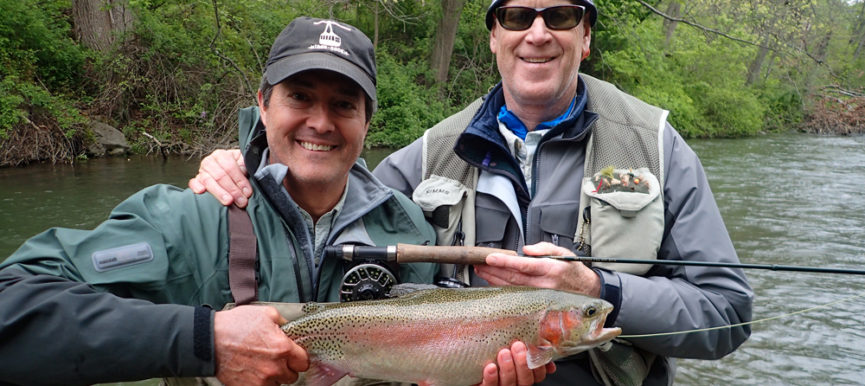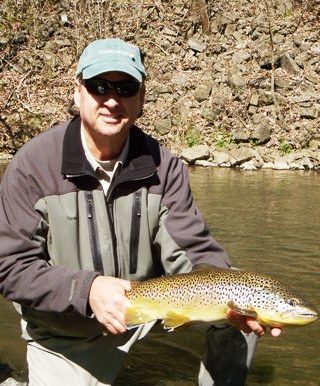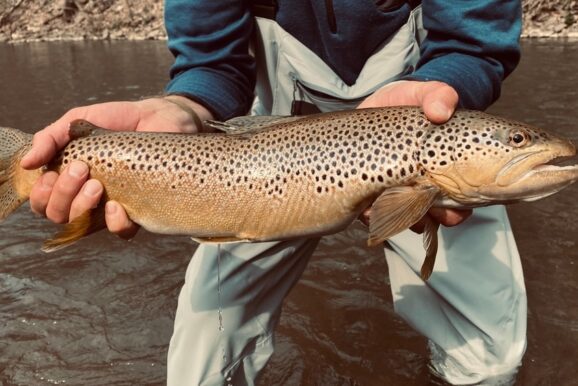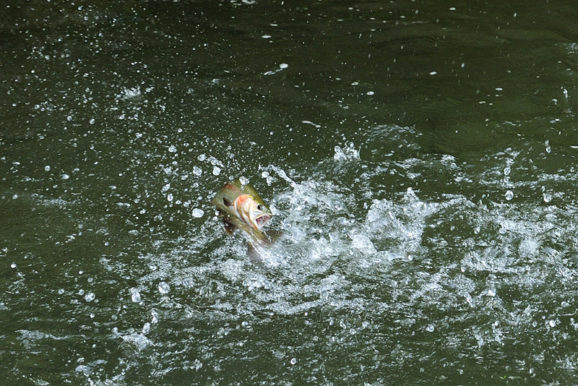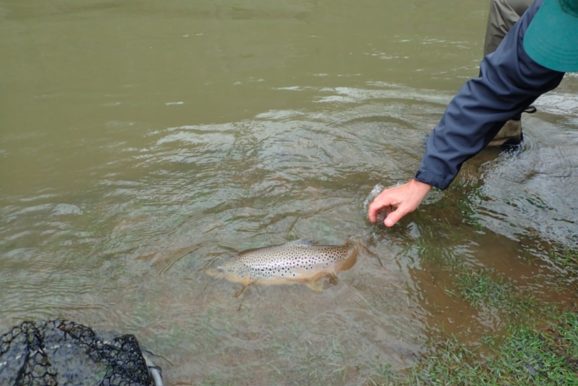The success of a nymph rig can often depend on whether the flies are being fished at the correct depth. Often times, exactly which fly being used is not nearly as important as the correct placement of that fly. The water your fishing, weight on a rig, and length of tippet work together to help decide which depth a fly will reach during a drift.
The best nymph fishermen take into consideration many variables to determine how to correctly rig nymphs to produce fish on any given day. Although, as a general rule of thumb, fishing nymphs tight to the bottom will usually result in the most strikes.
Winter and early spring are the times that fishing nymphs tight to the bottom is very productive. As the fish hug bottom this time of year, it’s important to get flies directly in front of the fish as they will not usually move out of their way to eat. This brings forth the mantra of fishing, low and slow.
When nymphing during the winter and early spring if you are not catching the bottom periodically you are simply not deep enough. Even the best fly fishermen catch bottom, it’s nothing to be ashamed of. If you have to fish your flies along the bottom to catch the fish, catching the bottom now and then is par for the course.
If you are having trouble getting your flies on the bottom, there are two major adjustments you can make to help achieve depth and catch fish:
- Add more weight – I continue to add weight gradually to catch fish in deep water until I eventually snag the bottom. Then at least you know your nymphs are deep enough.
- Add more tippet – The distance of tippet between the flies and the indicator must be long enough to allow the rig to reach the bottom. The old rule of thumb is you want the length of the tippet to be 1.5 times the depth of the water.
On the other hand when trying to nymph low and slow, you might find that you are catching the bottom periodically. If that’s the case just do the reverse of the tips above, either use less weight or less tippet.
Finding the right balance of tippet length and rig weight to nymph flies, low and slow on the bottom, is not always easy. However during the winter and early spring, it can be the difference between drifting flies above the fish or catching them.
Nymphing flies low and slow can be a very productive method during the winter and early spring. Give Joel a call to schedule a day on the water and get in on the action.

